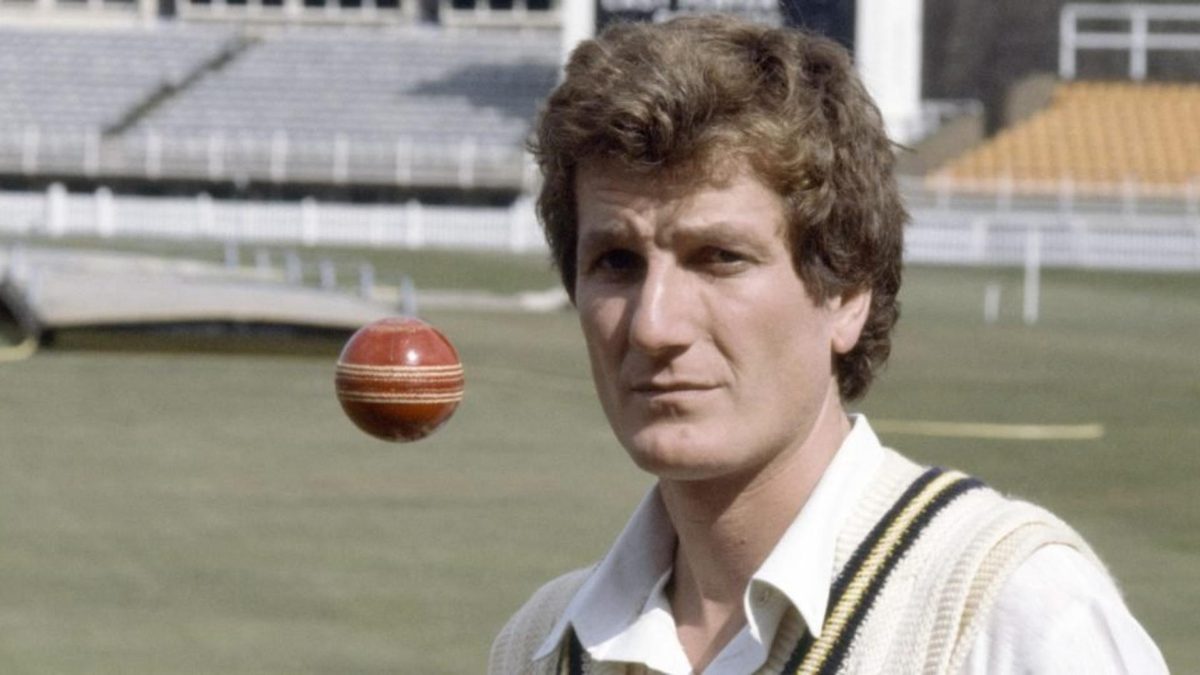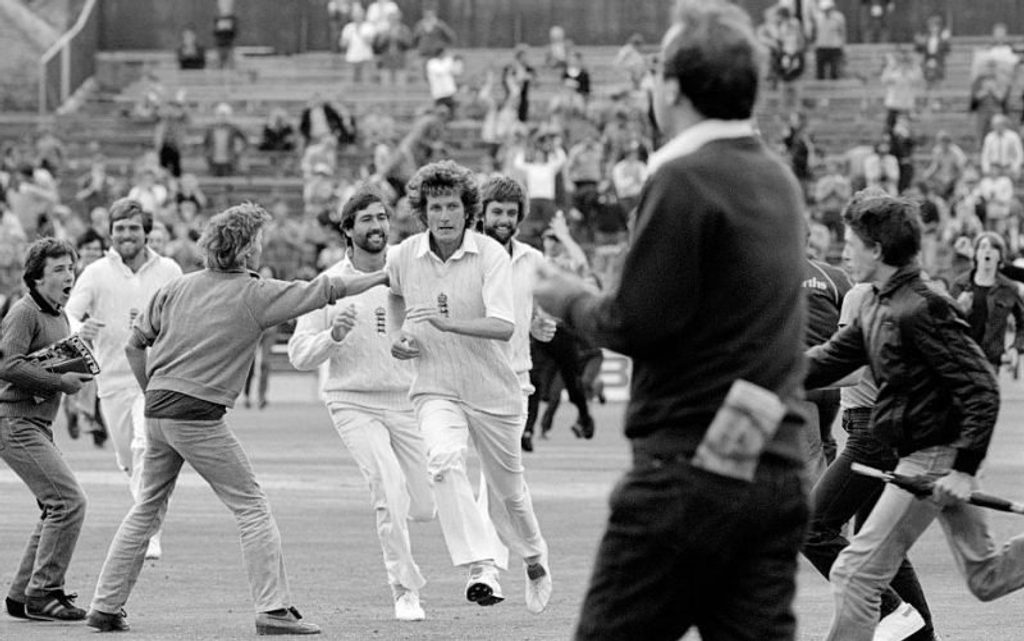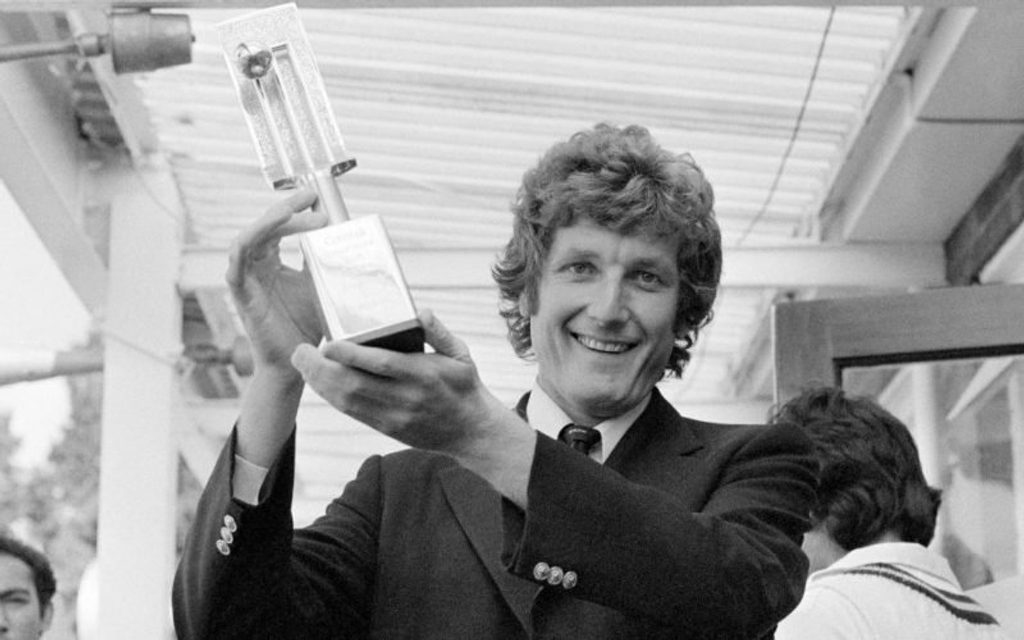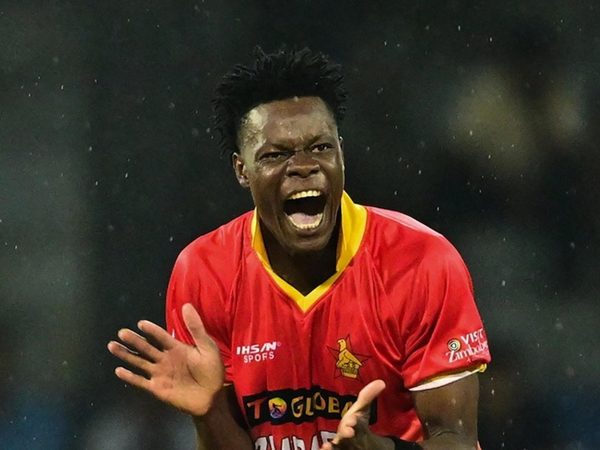
The death of Bob Willis in December 2019 plunged the cricket world into mourning. The 2020 Wisden Almanack remembered the life and career of a great fast bowler.
Willis, Robert George Dylan, MBE, died on December 4, 2019, aged 70.
On July 11, 1981, five days before the start of the Headingley Test, Bob Willis was watching his Warwickshire team-mates at The Oval when a call came through from the chairman of selectors, Alec Bedser. It was bad news. He was being left out of the side that would be captained by the returning Mike Brearley. Willis had ended the Lord’s Test earlier that week with a chest infection, and had not played since. The selectors thought him a risk.
The next few minutes were among the most important of Willis’s career. He persuaded Bedser he had recovered, and would play next day in the Sunday League to prove it. When the squad was announced, Mike Hendrick, part of the original 12, had been left out. Willis was in. He had bowled poorly at Lord’s – including 24 no-balls in Australia’s first innings – and some in the media thought that, at 32, and after knee surgery, he was a spent force. And he was included at Headingley at the last moment, ahead of John Emburey, when Brearley opted for an all-seam attack. First-innings figures of 30–8–72–0 hardly endorsed the judgment.
Back at the team hotel on the Monday evening, after Ian Botham’s bravura innings had given England slim hope, Brearley, Botham and Graham Gooch urged Willis to run in with more intent, focus on line not length, and forget about no-balls. “At that point in his career, he was definitely concerned he had lost some of his potency,” said Brearley. “He wondered if he should cut his pace, and concentrate on accuracy. It was fortunate for him that he had that shit-or-bust spell at Headingley.”
After five fruitless overs up the hill, Willis persuaded Brearley to give him a chance from the Kirkstall Lane End, with the wind at his back. “Normally he didn’t like bowling at that end, because of the slope and the problems with no-balls,” said Chris Old. Half an hour before lunch, and with Australia cruising at 48 for one in pursuit of 130, Willis clicked: batsmen began flinching like boxers on the ropes. He took three wickets before the break, and five more on a frenzied afternoon. The denouement – one of the most replayed moments in British sport – came when he plucked out Ray Bright’s middle stump with a yorker. Figures of eight for 43 would always be attached to his name.
Throughout, Willis remained in a trance-like state, barely celebrating or acknowledging team-mates. “As the wickets went down, everyone congregated, but he was looking through people,” said Old. “He didn’t want anyone around him – he just wanted to get on with the job.” After bowling Bright, he raised his arms triumphantly, circled as if unsure where to go, then turned and sprinted for the dressing-room through the crowd. Still stony-faced in a TV interview with Peter West, he attacked the media: “The standard of journalism in this country has gone down the nick completely.” He later regretted that – “foolish, petulant, immature,” he said – but the significance of his achievement sank in only during his exhausted journey back down the M1, when radio bulletins led on the cricket.
“Those tortured, pumping knees carried him in the end of 325 Test wickets, 128 of them in 35 Tests against Australia. Both were records for England.”
After his retirement in 1984, David Frith paid tribute to Bob Willis in the @WisdenAlmanackhttps://t.co/ayYN5Qw1dC
— Wisden (@WisdenCricket) December 4, 2019
A turning point had come in 1977, days after the Centenary Test, when Willis attended a barbecue at the Sydney home of the hypnotherapist Arthur Jackson. In conversation with England captain Tony Greig, Willis expressed admiration for Dennis Lillee. “You should be able to bowl like that, too,” snapped Greig. “But you’re always knackered after five overs.” Coming after a successful tour of India, Willis took umbrage, but he knew Greig’s remarks contained a grain of truth. Jackson recommended hypnosis to improve his fragile mental state, and the theories of Ernst van Aaken, pioneer of the concept of slow distance running to improve stamina. Willis instantly saw the benefits of hypnosis. And, after initial scepticism, he reaped the rewards of van Aaken’s regime on his battle-scarred knees.
The effect was immediate. In the 1977 Ashes, he took 27 wickets at 19, as England won 3–0. The following summer, against Pakistan and New Zealand, there were 25 more, then 20 in the Ashes defence of 1978/79, and 29 in 1981. Through hard work, and frequently defying pain, he became one of the world’s leading strike bowlers.
Willis may have lacked the aesthetic of Harold Larwood, the theatricality of Fred Trueman, or the guile of James Anderson, but he was among England’s fast-bowling greats. In his era, he lost nothing in hostility to Lillee, Jeff Thomson or the West Indians. Standing 6ft 6in, he charged in off a long, curving run, and delivered in a tangle of hair and arms, which flapped behind him, earning the nickname “Goose”. He had an open-chested action. “If it was swinging, he would swing it in; if it was seaming, he would move it away,” said Brearley. He was not engrossed in mechanics, but could be analytical. “He would talk about length and direction. He would ask if he looked all right, and talk to the wicketkeeper about how the ball was hitting the gloves.”
The son of a journalist, Willis was born in Sunderland, but left Wearside aged six weeks when work took his father to Manchester. He spent five years there, long enough to fall under cricket’s spell after an uncle took him and his brother, David, to the 1953 Ashes Test at Old Trafford. The family next moved to Stoke d’Abernon, near Guildford, when Willis senior took up a post with the BBC. To the appreciation of Surrey commuters, Bob and David would post the latest Test score on a blackboard in their window. He attended the Royal Grammar School, Guildford, and played for the Under-15s two years early.
 Bob Willis, Graham Gooch, Peter Willey and Mike Gatting run off the pitch after the final wicket at Headingley
Bob Willis, Graham Gooch, Peter Willey and Mike Gatting run off the pitch after the final wicket at Headingley
Winter afternoons on the rugby field imbued a lifelong dislike of the game, but he enjoyed football, and later kept goal for Corinthian-Casuals. He was a truculent teenager, and an infatuation with Bob Dylan did not endear him to the school staff; at the height of his obsession, he added Dylan as a middle name. Despite poor O-levels, he was determined to go to university, but his A-levels also fell short. Cricket was another matter. By 16, he was 6ft 4in, and coaches encouraged him to bowl fast. He went on a tour of Pakistan with Surrey and Middlesex Young Cricketers, and spent the rest of the winter manning a petrol pump.
Ignoring fierce parental opposition, he accepted a summer trial with Surrey in 1969, but was unprepared for the rigours of professional cricket, and contemplated giving up. Things improved, however, and he made his first-class debut against Scotland in August. He took his first five-for at Trent Bridge, although Garry Sobers spoiled his figures. And, on the rest day of a Championship match against Hampshire, he may have been the only county cricketer to watch Dylan’s Isle of Wight festival performance.
In 1970, he picked up 28 Championship wickets in 11 matches. When Alan Ward was injured early on that winter’s Ashes tour, captain Ray Illingworth wanted someone to match his pace. He had never seen Willis, but John Edrich endorsed him, and he was soon on the plane. When Ken Shuttleworth was injured before the Fourth Test at Sydney, the gangly 21-year-old Willis – a “two-iron with ears”, according to Bill O’Reilly – made his debut.
He played in four Tests, plus another in New Zealand, and returned home with 14 wickets at 28, plus an unlikely reputation as a sharp close-to-the-wicket fielder. But little in Willis’s career was straightforward. Instead of a hero’s welcome at The Oval, he found Surrey unwilling to award his county cap. Although he contributed 31 wickets to their Championship triumph in 1971, he resolved to leave; Geoff Arnold and Robin Jackman were ahead in the pecking order, and the Oval wickets discouragingly flat. Lancashire and Leicestershire were interested, but Warwickshire doubled his money. The TCCB, keen to discourage a transfer market, suspended him for two months, but he still took eight for 44 (including a hat-trick) against Derbyshire, and won a second consecutive Championship.
 Bob Willis lifts the trophy after leading England to a 2-1 series win over Pakistan in 1982
Bob Willis lifts the trophy after leading England to a 2-1 series win over Pakistan in 1982
The selectors, meanwhile, appeared to have forgotten him: Willis did not play another Test until August 1973. He earned a place in Mike Denness’s side for the tour of the Caribbean, but enjoyed little success, and appeared in only two home Tests in 1974. Then John Snow was omitted from the 1974/75 Ashes, leaving Willis as the main retaliatory weapon to Lillee and Thomson. He took 15 wickets in the first three Tests, before his knees gave in. Old recalled: “He would bowl an opening spell, but if I was twelfth man I knew I’d be coming on the field at some stage for Bob.” Ian Chappell said Willis was a force to be reckoned with before lunch, but there for the taking after tea.
In 1975, he submitted to surgery on both knees, and a long rehabilitation, spending the winter on the dole, bleakly contemplating his future. He played only sporadically in 1976, though a six-for in a tour match at Edgbaston meant a recall against West Indies, and he took eight wickets on his return at Headingley. Conventional wisdom was that fast bowlers were excess baggage in India, but Willis prospered under Greig’s ebullient leadership in 1976/77, and bowled superbly in a 3–1 win. That did not prevent Greig’s rebuke in Sydney, and Willis was even better as England regained the Ashes. After long deliberation, he turned down Kerry Packer – and soon became a vocal critic of World Series Cricket.
He was a Wisden Cricketer of the Year in 1978. That summer, he attracted criticism for hitting Pakistan tailender Iqbal Qasim in the mouth with a round-the-wicket bouncer at Edgbaston. Willis was unrepentant: Qasim had been sent in at No. 3 as a nightwatchman, and been batting for 45 minutes that morning. Willis’s only regret was going back to his mark without checking on his well-being.
Surprisingly, in view of his Test commitments, he was appointed Warwickshire captain in 1980. Despite a sharp cricket brain, he had never been regarded as leadership material. Warwickshire immediately won the Sunday League, but struggled in the Championship, and in 1981 finished bottom. Willis took 13 wickets in seven games. “It was of limited comfort to suffering supporters that he was putting on match-winning performances against Australia,” huffed Wisden. There was grumbling among the Warwickshire members. Once, when he brought himself on, a spectator called out: “Bowler’s name?”
Early in the 1982 season, after the sacking of Keith Fletcher as England captain, Willis received a call from chairman of selectors Peter May, asking him to take over. The team had been denuded by suspensions following the rebel tour of South Africa – a team Willis had turned down the chance to lead. The England job was another matter: “It represented the pinnacle of all my years in the game.”
England beat India and Pakistan at home (Willis missed the only Test defeat), but lost in Australia that winter, when he paid the price for bowling first at Adelaide. He felt let down by some senior players, and dismayed by the lack of application among the youngsters. England reached the semi-finals of the 1983 World Cup, and beat New Zealand 3–1, but a few months later they lost a series to them for the first time, and were 1–0 down in Pakistan when Willis was incapacitated by illness. It was the end of his captaincy, after 18 Tests, seven wins and five defeats. He was keen to play on against West Indies in 1984, despite not having fully recovered from the virus picked up in Pakistan. After being thrashed around Headingley by Michael Holding in the third Test, he withdrew from the Fourth. Within weeks, he had announced his retirement, after feeling ill throughout Warwickshire’s Benson and Hedges Cup final defeat by Lancashire. He had 325 Test wickets at 25; at that point, only Lillee had more.
Willis did broadcasting work for the BBC, quickly realising he could not hold back from criticising old team-mates, and was an early signing for Sky, Rupert Murdoch’s new satellite venture. He became one of their key commentators, though his monotone attracted criticism: Tim de Lisle likened it to the drone of a lawnmower. But colleague Charles Colvile was kinder: “People overlooked the fact that he was a fine wordsmith.”
After Sky acquired exclusive rights to England’s home Tests in 2006, Willis moved to an early-evening discussion programme. Hosted by Colvile, “The Verdict” (later “The Debate”) proved a natural home for his opinions, sometimes hammed up, rarely unfair. “When we got to the studio, he knew what he was going to say, and he would rehearse it,” said Colvile. “But I didn’t want him to tell me. I wanted to react to it.” Willis’s “Well, Charles” preamble became a catchphrase. “He was as professional about his broadcasting as he had been about his fast bowling,” said Colvile.
Willis’s death, after several years of suffering with cancer, had an impact beyond the cricket community – The Daily Mail had six pages of coverage – and underlined the place of Headingley ’81 in the national consciousness. As Willis once said: “The sight of Ray Bright’s middle stump going over will probably be the last memory I take to my grave.”








